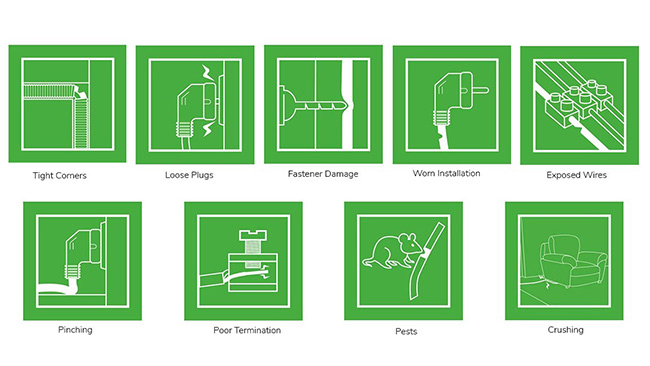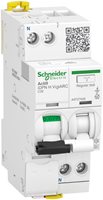Keep your family and property protected
In just seconds, undetected arc faults can break out into an electrical fire. Broken wires, loose connections, crushed cables and worn insulation can all cause hidden arc faults in electrical circuits. Arc Fault Detection Device’s (AFDD’s), also known as Arc Fault Circuit Interrupter, can help to isolate the faulty circuit as soon as the Arc fault is detected.
Arc faults can be difficult to see. They usually occur in hidden places, such as damaged cables, inside walls or a loose connection in a hidden junction box, or outlet sockets.
Arc Faults are one of the main causes of electrical fires. These fires are surprisingly common in older buildings.
How do Arc Faults Occur?
How Arc Fault Fires Start
Very localised phenomena can cause an electrical fire. Check out this video to see how a loose wire in a standard multi-socket can arc and start a fire.
What can cause Arc Fault?

What is an Arc Fault Detection Device?
An AFDD is a circuit breaker that automatically cuts the electricity supply when it detects an arc fault in a circuit. By cutting the electricity supply, AFDD’s help prevent arc faults from reaching temperatures where electrical fires can break out.
MAX4 AFDD

Acti9 iDPN H VigiArc

Where to use AFDDs

Homes, dormitories, and other places with sleeping accommodation

Fire propagating structures

Museums, galleries that have irreplaceable goods

Day care centres, pre-schools, schools, retirement and nursing homes; areas where there are children, handicapped and elderly people

Large gathering places, like cinemas, universities, restaurants, underground stations, office complexes and shopping centres

Risk locations, this risk may be from what is stored there, such as a barn or wood working shops

Locations with combustible construction materials like wooden buildings
Escalated Risk
Power circuits (connected to socket outlets) have a higher risk of arc faults because of the following reasons:
- Arcing in extension boards
- Damaged cables due to being plugged in behind furniture
- Damaged extension leads from bending around corners or trapped under furniture
- Damage to plugged cables due to temperature variation, ultraviolet rays, vibrations, humidity, and rodents in outdoor environment.
Check out this message from Gary Busbridge, the Standardisation Manager for Clipsal by Schneider Electric, to learn more about AFDD.
Can other protective devices replace AFDDs?
Smoke detectors help to alert building occupants to the presence of smoke, but only after a fire has started. It is mandatory for all new homes in Australia to have smoke alarms installed.
Early detection helps occupants evacuate, however, smoke alarms can’t prevent fires. The elderly disabled or people in a difficult location may not have enough time to evacuate.
Clipsal AFDDs are designed to help prevent electrical fires from starting.
Compact and easy to install, AFDDs fit into residential and building electrical switchboards. They can’t be replaced by any other protective device such as; miniature circuit breakers (MCBs), surge protection devices (SPDs), or residual current devices (RCDs). While these protect against specific electrical hazards, they are not designed to detect arc faults.











